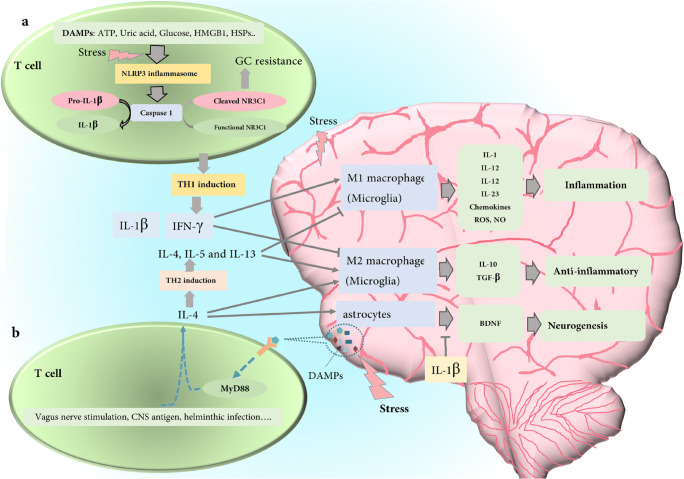Fig. 4.
Proposed mechanism for immunopathology or immunoprotection roles of T cell in CNS: (a) stress-induced DAMPs such as ATP, uric acid, glucose HMGB1, and HSPs activate NLRP3 inflammasome and then caspase 1. This proteolytic enzyme degrades pro-IL-1 to IL-1 as well as dose degradation of the glucocorticoid receptor (NR3C1). After cleaving glucocorticoid receptor, T cells changed into a glucocorticoid resistance cells and polarized to TH1 subtype (IFN-γ producing subtype) as well. The inflammatory phenotype of microglia cell (M1) is differentiated and affected by IFN-γ and then produces inflammatory cytokines which can create an inflammation condition in the brain. This cleavage also results in GC resistance, so the phenomenon can remove the immunosuppressive effect of stress released CGs on the inflammatory function of TH1 cells. (b) Stress-induced DAMPs can also trigger CD4+ T cells throughout MyD88 signaling without dependency on MHC-II peptide, and the activation leads to IL-4 production by T cells. Other stimuli such as vagus nerve stimulation, CNS antigen, and helminthic infection also polarize T cell to the IL-4-producing T cell (TH2). IL-4 differentiates microglia cells to anti-inflammatory phenotypes and induces astrocytes to produce BDNF, as a neurogenesis factor. BDNF production can be inhibited by IL-1β

